Pearl Zhu's Blog, page 1348
April 15, 2016
“Digital Valley” Chapter 3 Introduction: System Wisdom
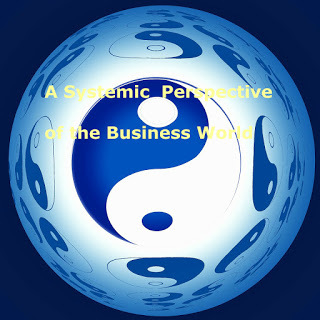 Systems Thinking (ST) by definition is a cognitive thinking process to embrace holism and nonlinearity. It’s a holistic, balanced, and often abstract thinking to understand things profoundly. ST is a good combination of analytical thinking and synthetic thinking, see the trees without missing the forest, quantify not just the hard data, but soft variables as well; go beyond the surface to dig through the root cause of problem arising, and take a scientific approach to explore the business and ecosystem. So it leads to wisdom by which the complex situations can be managed in a systematic way. ST is not just a science, but an art as well, it’s an interdisciplinary thought process with deep creativity in it.
Systems Thinking (ST) by definition is a cognitive thinking process to embrace holism and nonlinearity. It’s a holistic, balanced, and often abstract thinking to understand things profoundly. ST is a good combination of analytical thinking and synthetic thinking, see the trees without missing the forest, quantify not just the hard data, but soft variables as well; go beyond the surface to dig through the root cause of problem arising, and take a scientific approach to explore the business and ecosystem. So it leads to wisdom by which the complex situations can be managed in a systematic way. ST is not just a science, but an art as well, it’s an interdisciplinary thought process with deep creativity in it.
Wholeness: The system is more than its parts. Out visualization of complex systems is a sphere nested within another sphere and another sphere, etc. Experienced System Thinkers are aware that all things are connected. There is flexibility, abstract, and pliability in the concept of a system and system of systems. These entities are comprised of humans, machines, and the environment. One must understand the interactions and interfaces of the defined system under consideration. Hence, System Analysis requires many forms of additional thinking: abstract, holistic, system, quantitative, objective, subjective, temporal, and critical thinking, etc. ST provides for better and more accurate understanding the overall situation and problems, and hence better defining the problems and subsequently how you should go about solving them in what sequence. It is indeed the wisdom to understand the “wholeness.” of the business and the world.
The purpose of Systems Thinking: Humans as intelligent beings have the ability to think! One might ask: What is the purpose of Thinking, what is the purpose of Systems Thinking, and what is the purpose of being a Systems Thinker? Practically, the purpose of ST is to solve problems and create desirable future. So many people do not know how to connect the dots within complex systems, nor think inclusively, holistically, nor comprehend dynamics, inductions or deductions, nor understand variables, interfaces, and interaction. ST is a holistic and integrated way of approaching situations and problems, frame the right questions, and handle the problems in a structural way. The systematic structure provides the shell within which individuals can collaborate to create transparency to problems. Once a state of transparency has been reached, collaboration turns into cooperation, as multiple approaches to finding solutions require efforts only guided by intentions, based on common value and understanding the issues.
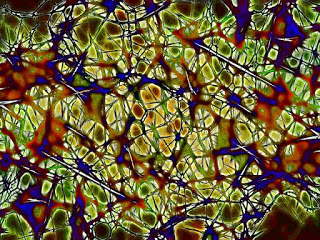 Leveraging Systems Thinking in catching the true wisdom: ST is to understand the interconnectivity between parts and whole. Wisdom is the insightful quality of having experience, knowledge, and good judgment, the inner quality of being wise. Wisdom is often abstract, and ST is the ability to think conceptually on the higher level. By practicing SY, contemporary leaders and workers have the better change to grasp the true wisdom, not just “conventional wisdom,” build a good strategy, and make a sound judgment. In ST, the true wisdom often comes from “a willingness to let go accumulated traditional wisdom.” The reason people are struggling for wisdom because it means that one has to make a huge effort to get beyond rational linear thinking, learning, unlearning, and delearning all the time, because the true wisdom is transcendental knowledge which often comes through nonlinear thinking and abstract of insight by practicing ST or “out-of-box” thinking. ST advocate holism, interdisciplinarity, and versatility.
Leveraging Systems Thinking in catching the true wisdom: ST is to understand the interconnectivity between parts and whole. Wisdom is the insightful quality of having experience, knowledge, and good judgment, the inner quality of being wise. Wisdom is often abstract, and ST is the ability to think conceptually on the higher level. By practicing SY, contemporary leaders and workers have the better change to grasp the true wisdom, not just “conventional wisdom,” build a good strategy, and make a sound judgment. In ST, the true wisdom often comes from “a willingness to let go accumulated traditional wisdom.” The reason people are struggling for wisdom because it means that one has to make a huge effort to get beyond rational linear thinking, learning, unlearning, and delearning all the time, because the true wisdom is transcendental knowledge which often comes through nonlinear thinking and abstract of insight by practicing ST or “out-of-box” thinking. ST advocate holism, interdisciplinarity, and versatility.
Wisdom is an umbrella term, at its best, it is the amalgamation of thought, analysis, planning, prediction of consequences, and so on. Ultimately, wisdom is all about making ‘distinctions’ between what works and what does not work in the real world. Systems Thinking definitely helps to reach and manage wisdom more systematically.
Digital Valley Book Slideshare Presentation & VideoDigital Valley IntroductionDigital Valley Book Preview Chapter 1 Creative WisdomDigital Valley Book Preview Chapter 2 Strategic WisdomDigital Valley Book Preview Chapter 3 System WisdomDigital Valley Book Preview Chapter 4 Decision WisdomDigital Valley Book Preview Chapter 5 Culture Wisdom
Digital Valley Book Order Link on AmazonDigital Valley Book Order Link on Barners&NobleDigital Valley Book Order Link on IBookFollow us at: @Pearl_Zhu
Published on April 15, 2016 23:40
April 14, 2016
The Weekly Insight of the “Future of CIO” 4/15/2016
 The “Future of CIO” Blog has reached 1.3 million page views with 2700+ blog posting in 59+ different categories of leadership, management, strategy, digitalization, change/talent, etc. The content richness is not for its own sake, but to convey the vision and share the wisdom. Here is the weekly insight about digital leadership, IT Management, and Talent Management.
The “Future of CIO” Blog has reached 1.3 million page views with 2700+ blog posting in 59+ different categories of leadership, management, strategy, digitalization, change/talent, etc. The content richness is not for its own sake, but to convey the vision and share the wisdom. Here is the weekly insight about digital leadership, IT Management, and Talent Management. The Weekly Insight of the “Future of CIO” 4/15/2016
“Digital Valley” Book Preview Chapter 1: Creative Wisdom, Presentation & Video: Creativity is an innate ability to create novel ideas. Creative Thinking is unique and original than many other types of thinking: some are the habit, repetition of memory, emotional reaction, approval seeking, following, social conformity. Creativity is about thinking beyond conventional wisdom, or the “Out of Box” thinking. Creativity is infused with an inner cohesion and comes from a vision of uniqueness. So is creativity a high level of thinking, and what is creative wisdom all about?
“CIO Master” Book Tuning V: “5W + 1H” Strategy Navigation: The strategy is the pillar of organizational existence, its vision, mission, design, structure, and functions. A real strategy is neither a document nor a forecast, but rather an overall approach based on a diagnosis of a challenge. Being “strategic” is being centered around “Why” and “What,” and being backed by a roadmap and a plan of action that are informed with “Who,” “Where,” and “When.” The “tactics” is being more centered on the “HOW,” the individual steps and mechanics involved in the execution. More specifically, what is the “5W+1H” strategy navigation all about? Three Questions to Assess a Person’s “Blind Spot” The business and the world are moving into deep, deep digital dynamic with velocity, complexity, uncertainty, ambiguity and rapid changes. It is increasingly difficult to either steer the individual toward a progressive career path or navigate the business to the right direction with the right strategy. It also becomes more challenging to make effective decisions or sound judgment on the daily basis for both digital leaders and professionals. So how to assess a person’s “blind spot” in order to predict his/her ability to think thoroughly and decide wisely?
The Monthly Change Management Agenda: Change as an Ongoing Capability Apr. 2016 Change is inevitable, but too often changes are made as a reaction to outer impulses, crisis, and demands. This is the bureaucracy’s way of meeting the challenges. The perspective is often rational, an automatic cultural response; defending already existing structures, all that we take for granted, without questioning the underlying premises. So in order to make change both proactive and sustainable, how to build change as ongoing business capabilities, not just a one-time business initiative?
 To Celebrate 2700th Blog Posting: The Multitude of Creative Leadership Digital is the age of innovation. Creativity matters more than ever because businesses and the world today become over-complex with accelerated changes. The more "creative leaders," we have, the better for the world. Creative leaders can inspire the culture of creativity and manage innovation seamlessly. By etymology, "innovare" signifies "to germinate seeds," knowing that, go ahead and innovate by inventing your future, and the one of your company’s. Creative leadership is the unique combination of leadership mindset and behaviors that are futuristic and forward thinking, develops and achieves high quality and meaningful results over a sustained period of time. Creative leadership can be described as "Adaptability meets Agility.” Creativity has many faces, and creative leadership is the multitude to manage innovation in an effective way.
To Celebrate 2700th Blog Posting: The Multitude of Creative Leadership Digital is the age of innovation. Creativity matters more than ever because businesses and the world today become over-complex with accelerated changes. The more "creative leaders," we have, the better for the world. Creative leaders can inspire the culture of creativity and manage innovation seamlessly. By etymology, "innovare" signifies "to germinate seeds," knowing that, go ahead and innovate by inventing your future, and the one of your company’s. Creative leadership is the unique combination of leadership mindset and behaviors that are futuristic and forward thinking, develops and achieves high quality and meaningful results over a sustained period of time. Creative leadership can be described as "Adaptability meets Agility.” Creativity has many faces, and creative leadership is the multitude to manage innovation in an effective way.Blogging is not about writing, but about thinking and innovating the new ideas; it’s not just about WHAT to say, but about WHY to say, and HOW to say it. It reflects the color and shade of your thought patterns, and it indicates the peaks and curves of your thinking waves. Unlike pure entertainment, quality and professional content takes time for digesting, contemplation and engaging, and therefore, it takes the time to attract the "hungry minds" and the "deep souls." It’s the journey to amplify diverse voices and deepen digital footprints, and it's the way to harness your innovative spirit.
Follow us at: @Pearl_Zhu
Published on April 14, 2016 23:46
“Digital Valley” Book Preview Chapter 2: Strategic Wisdom
A strategic thinker always “keeps the end in mind.”
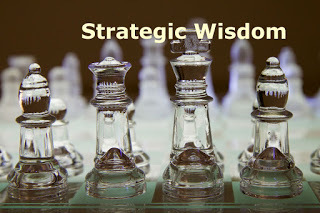 Strategic Thinking is the ability to think on a temporal plane: where you are, where you want to be, identify gaps, and take alternate approaches to anticipate and provide solutions. It’s the wisdom because the strategy is often the guide and roadmap to navigate us toward the right direction, making decisions directly towards achieving defined outcomes as a purposive activity, so it is the “Keep the end in mind” thought process and multidimensional intelligence. The leaders or digital professionals with strategic wisdom would have a clear vision to pursue, the courage to step into the uncharted water, the well thought out plan to adapt to changes and have their perseverance to keep laser focus. It is the application of knowledge and intelligence to solve problems with long term perspectives.
Strategic Thinking is the ability to think on a temporal plane: where you are, where you want to be, identify gaps, and take alternate approaches to anticipate and provide solutions. It’s the wisdom because the strategy is often the guide and roadmap to navigate us toward the right direction, making decisions directly towards achieving defined outcomes as a purposive activity, so it is the “Keep the end in mind” thought process and multidimensional intelligence. The leaders or digital professionals with strategic wisdom would have a clear vision to pursue, the courage to step into the uncharted water, the well thought out plan to adapt to changes and have their perseverance to keep laser focus. It is the application of knowledge and intelligence to solve problems with long term perspectives.
Multidimensional Intelligence: A strategic mind is contextual, that awareness of a larger organizational context is valuable, the power of context is in the ways you can change the factors that create a context. There are two schools of thought about strategic process: the blending of emergent and deliberate strategies. For complex problem solving or strategy making, understanding context is often the first and important step in understanding, without it, you are working without any boundaries, or basis for understanding what you are doing. Critical Thinking is also a crucial element in Strategic Thinking. Generally speaking, strategist have a clear vision, they master at both Critical Thinking and holistic thinking, and they also have creativity to come out the alternative solutions to the old problems, They are the one who can set the right priority, follow the set of principles such as simplicity, but also keep learning agile to adapt to changes in the rapidly changing digital dynamic. The strategy isn’t just about making decisions. It is about getting the best information you can, continuously update. It’s about uncovering all the options, evaluating the long-term, not just the immediate goals, and building about agility and flexibility.
Leveraging“Simplexity” in strategy crafting: Digital organizations are complex systems that are dynamic, self-evolving, and self-perpetuating. The fact is that change is happening at a much faster pace than ever before, requiring a much more rapid response in order to survive and thrive. And the degree of Strategic Planning has a correlation with degree of uncertainty and unpredictability. The real challenge is not in simplifying by ignoring the complications, but to simplify by including the compiliations. Understanding the dynamics, working to influence the dynamics and shaping a good digital strategy takes attention and energy. THe strategic process is important, at best, it keeps you on track and achieve desired outcome and at worst, it helps in minimizing the pain or loss. So the challenge is to evaluate the dynamic business in order to decide on, take simple actions and monitor the outcomes. Good Strategic Thinking is temporal in nature, it looks beyond the immediate causal relationships to the more difficult second and third order effects of changes to organizations’ operating in open systems. Stretching the mind then to explore what is plausible, possible and probable can provide the insights of exploring these alternatives, and the business can be better positioned to act when the unexpected occurs.
 Being different and making choices: Strategy is about being different and is about making choices. The purpose of the strategy is the creation of competitive advantage. It is an intellectual endeavor, or thinking and designing process, to come up with the best positioning and execution forces that would be most advantages to accomplish the respectively set goals, objectives and business visions. A strategy is the direction and scope of an organization over the long-term, which gain competency for the organization through its configuration of resources within a changing environment in order to fulfill stakeholder’s expectations. A strategy is a choice that constrains subsequent decisions. It is all about making actionable plans for people with cognitive difference, to work in harmony around common understanding and agreed on plans. Business strategy requires an intelligent mix of both Deliberate Strategy (Top-down) and Emergent Strategy (Bottom-Up), also making a strategic learning process as feedback to intended strategy. And business strategy is responsible for putting the enterprise in the right place, at the right time, with the right means and partners so as to the right kind of results.
Being different and making choices: Strategy is about being different and is about making choices. The purpose of the strategy is the creation of competitive advantage. It is an intellectual endeavor, or thinking and designing process, to come up with the best positioning and execution forces that would be most advantages to accomplish the respectively set goals, objectives and business visions. A strategy is the direction and scope of an organization over the long-term, which gain competency for the organization through its configuration of resources within a changing environment in order to fulfill stakeholder’s expectations. A strategy is a choice that constrains subsequent decisions. It is all about making actionable plans for people with cognitive difference, to work in harmony around common understanding and agreed on plans. Business strategy requires an intelligent mix of both Deliberate Strategy (Top-down) and Emergent Strategy (Bottom-Up), also making a strategic learning process as feedback to intended strategy. And business strategy is responsible for putting the enterprise in the right place, at the right time, with the right means and partners so as to the right kind of results.
Being able think strategically is a “hard” skill that not everyone has. Statistically, only 5% of the population is nature strategic thinker. Given that, the importance of diversity and formulating a team that has complementing skills can not be understated. A forward-thinking organization needs people, especially leaders with strategic wisdom who can turn that Strategic Thinking into reality. Strategic Thinking is the skill that most can learning, but it can not be taught, which explains why so many strategic plans are poorly designed and carried out. Companies that encourage Strategic Thinking as an ongoing pursuit are more nimble, adaptive and quicker to capitalize on opportunities, also focus on long-term prosperity. Follow us at: @Pearl_Zhu
 Strategic Thinking is the ability to think on a temporal plane: where you are, where you want to be, identify gaps, and take alternate approaches to anticipate and provide solutions. It’s the wisdom because the strategy is often the guide and roadmap to navigate us toward the right direction, making decisions directly towards achieving defined outcomes as a purposive activity, so it is the “Keep the end in mind” thought process and multidimensional intelligence. The leaders or digital professionals with strategic wisdom would have a clear vision to pursue, the courage to step into the uncharted water, the well thought out plan to adapt to changes and have their perseverance to keep laser focus. It is the application of knowledge and intelligence to solve problems with long term perspectives.
Strategic Thinking is the ability to think on a temporal plane: where you are, where you want to be, identify gaps, and take alternate approaches to anticipate and provide solutions. It’s the wisdom because the strategy is often the guide and roadmap to navigate us toward the right direction, making decisions directly towards achieving defined outcomes as a purposive activity, so it is the “Keep the end in mind” thought process and multidimensional intelligence. The leaders or digital professionals with strategic wisdom would have a clear vision to pursue, the courage to step into the uncharted water, the well thought out plan to adapt to changes and have their perseverance to keep laser focus. It is the application of knowledge and intelligence to solve problems with long term perspectives.
Multidimensional Intelligence: A strategic mind is contextual, that awareness of a larger organizational context is valuable, the power of context is in the ways you can change the factors that create a context. There are two schools of thought about strategic process: the blending of emergent and deliberate strategies. For complex problem solving or strategy making, understanding context is often the first and important step in understanding, without it, you are working without any boundaries, or basis for understanding what you are doing. Critical Thinking is also a crucial element in Strategic Thinking. Generally speaking, strategist have a clear vision, they master at both Critical Thinking and holistic thinking, and they also have creativity to come out the alternative solutions to the old problems, They are the one who can set the right priority, follow the set of principles such as simplicity, but also keep learning agile to adapt to changes in the rapidly changing digital dynamic. The strategy isn’t just about making decisions. It is about getting the best information you can, continuously update. It’s about uncovering all the options, evaluating the long-term, not just the immediate goals, and building about agility and flexibility.
Leveraging“Simplexity” in strategy crafting: Digital organizations are complex systems that are dynamic, self-evolving, and self-perpetuating. The fact is that change is happening at a much faster pace than ever before, requiring a much more rapid response in order to survive and thrive. And the degree of Strategic Planning has a correlation with degree of uncertainty and unpredictability. The real challenge is not in simplifying by ignoring the complications, but to simplify by including the compiliations. Understanding the dynamics, working to influence the dynamics and shaping a good digital strategy takes attention and energy. THe strategic process is important, at best, it keeps you on track and achieve desired outcome and at worst, it helps in minimizing the pain or loss. So the challenge is to evaluate the dynamic business in order to decide on, take simple actions and monitor the outcomes. Good Strategic Thinking is temporal in nature, it looks beyond the immediate causal relationships to the more difficult second and third order effects of changes to organizations’ operating in open systems. Stretching the mind then to explore what is plausible, possible and probable can provide the insights of exploring these alternatives, and the business can be better positioned to act when the unexpected occurs.
 Being different and making choices: Strategy is about being different and is about making choices. The purpose of the strategy is the creation of competitive advantage. It is an intellectual endeavor, or thinking and designing process, to come up with the best positioning and execution forces that would be most advantages to accomplish the respectively set goals, objectives and business visions. A strategy is the direction and scope of an organization over the long-term, which gain competency for the organization through its configuration of resources within a changing environment in order to fulfill stakeholder’s expectations. A strategy is a choice that constrains subsequent decisions. It is all about making actionable plans for people with cognitive difference, to work in harmony around common understanding and agreed on plans. Business strategy requires an intelligent mix of both Deliberate Strategy (Top-down) and Emergent Strategy (Bottom-Up), also making a strategic learning process as feedback to intended strategy. And business strategy is responsible for putting the enterprise in the right place, at the right time, with the right means and partners so as to the right kind of results.
Being different and making choices: Strategy is about being different and is about making choices. The purpose of the strategy is the creation of competitive advantage. It is an intellectual endeavor, or thinking and designing process, to come up with the best positioning and execution forces that would be most advantages to accomplish the respectively set goals, objectives and business visions. A strategy is the direction and scope of an organization over the long-term, which gain competency for the organization through its configuration of resources within a changing environment in order to fulfill stakeholder’s expectations. A strategy is a choice that constrains subsequent decisions. It is all about making actionable plans for people with cognitive difference, to work in harmony around common understanding and agreed on plans. Business strategy requires an intelligent mix of both Deliberate Strategy (Top-down) and Emergent Strategy (Bottom-Up), also making a strategic learning process as feedback to intended strategy. And business strategy is responsible for putting the enterprise in the right place, at the right time, with the right means and partners so as to the right kind of results. Being able think strategically is a “hard” skill that not everyone has. Statistically, only 5% of the population is nature strategic thinker. Given that, the importance of diversity and formulating a team that has complementing skills can not be understated. A forward-thinking organization needs people, especially leaders with strategic wisdom who can turn that Strategic Thinking into reality. Strategic Thinking is the skill that most can learning, but it can not be taught, which explains why so many strategic plans are poorly designed and carried out. Companies that encourage Strategic Thinking as an ongoing pursuit are more nimble, adaptive and quicker to capitalize on opportunities, also focus on long-term prosperity. Follow us at: @Pearl_Zhu
Published on April 14, 2016 23:41
“CIO Master” Tuning VI: Three Steps Change Management Scenario
 IT is like the business engine, CIOs are accountable for critical part of the business that is constantly changing and evolving, so digital CIOs should not only match the pace with the changes in technology, the pace at which the organization can effectively manage these changes, but also proactively driving changes in business transformation. CIOs as change agents: What’re your logical steps in Change Management scenario?
IT is like the business engine, CIOs are accountable for critical part of the business that is constantly changing and evolving, so digital CIOs should not only match the pace with the changes in technology, the pace at which the organization can effectively manage these changes, but also proactively driving changes in business transformation. CIOs as change agents: What’re your logical steps in Change Management scenario?
Read the psychology behind the changes: The CIO as a change agent not only touches his/her own function, but also needs to make an influence on an entire organization and business ecosystem. The people that make up the organization must see a compelling need to change from risky practices, obsolete ideas, processes and do so proactively before issues materialize. It also helps when people believe things will improve by changing, innovating, upgrading, etc. The logical first step is to read the psychology behind the change in order to deal with change inertia. The fear of change is common and rational. People do feel very uncomfortable and vulnerable in the face of "uncertainty" (their perception at any moment in time). It would do good for change practitioners to have a reasonably good understanding of neuroscience; since it does help to understand people's responses to change. People respond in different ways to different situations, and some people perceive less risk when compared with others. The fear of consequences; the perception / response to consequences vary from person to person, and that's what makes change interesting and challenging. Hence, change practitioners need to have good critical thinking skills, high level of adaptability, communication and engagement skills. Change is a dance between the top management and the affected parts of the organization. Starting with a core belief that people can be trusted, they like to change, but dislike “being changed.
Empowering the change agent is critical to real change: Change is driven by a combination of the “pull” of the leadership and the “push” of the self-managed teams, the effective communication and deep engagement around change. There will be bumps and roadblocks along the way, mainly they are those anti-digital mindsets, such as silo thinking (refuse to have cross-functional collaboration); polar thinking (we are right, they are wrong); non-critical thinking (reflexive, not reflective), stereotypical ('looks' like leader, not think as a leader), small thinking (locally right, globally wrong) or simply those 'resistance to change' mind. Hence, it’s critical to empower change agents, give workgroups the authority to make changes to their work process and accept responsibility for decisions related to their actions. Change agents are people who have the organizational knowledge, have built relationships, and have established their credibility. Because of their insider know-how, they will be the ones to see the need for change, often first to realize the threats and appreciate the opportunities, and have the passion for making things happen. They know that satisfied customers are the foundation for building the enterprise’s reputation. At the same time, the change agent needs to build meaningful relation until you begin to look inside self to value the strength you never knew you had. To achieve desired change, an organization must create an environment that enables effective collaboration, share & promote ideas, and provide necessary incentives for employees. Change should be viewed as an opportunity and Change Management needs to be people centric, not just manage a single project, but focs on building change as an important business capability.
 Change Management Assessment and measurement: Dysfunctions and inefficiencies are easier to uncover if there is a good measurement system is in place. A change manager also needs to assess and evaluate every specific scenario to create the change program success. Ultimately the success of the change program is measured by results that are important values to the organization - and the cultural adoption of these goals is part of that measure. If these values have not been clearly identified at the outset, you cannot get the true alignment of your organization and all working toward the same goals and outcomes, you lack clarity and purpose of direction for changes. From a finance perspective, the better the quality of change management program, the more anticipated benefits, and deliverables will be achieved. Change leaders and managers can also leverage balance scorecard in measuring the outcome of the change. How do you measure these in a meaningful way? Perhaps the answer lies in using a range of different tools rather than relying on a single method. That metric needs to be SMART, so people can see what the outcome will look like throughout their transition. Measurements are in place for projects and services, create an open culture of curiosity that measurements are for improvement, not just for performance management.
Change Management Assessment and measurement: Dysfunctions and inefficiencies are easier to uncover if there is a good measurement system is in place. A change manager also needs to assess and evaluate every specific scenario to create the change program success. Ultimately the success of the change program is measured by results that are important values to the organization - and the cultural adoption of these goals is part of that measure. If these values have not been clearly identified at the outset, you cannot get the true alignment of your organization and all working toward the same goals and outcomes, you lack clarity and purpose of direction for changes. From a finance perspective, the better the quality of change management program, the more anticipated benefits, and deliverables will be achieved. Change leaders and managers can also leverage balance scorecard in measuring the outcome of the change. How do you measure these in a meaningful way? Perhaps the answer lies in using a range of different tools rather than relying on a single method. That metric needs to be SMART, so people can see what the outcome will look like throughout their transition. Measurements are in place for projects and services, create an open culture of curiosity that measurements are for improvement, not just for performance management.People are always at the center of change. Change Management can become more successful with people at the core of change, the cause of changes, and the purpose of change. By cultivating people with a growth mindset and instill them with the "why" and "know-how" of the change initiatives, take the logical step in Change Management scenario, companies will see a more successful change implementation, measure, follow up, and sustaining power. Follow us at: @Pearl_Zhu
Published on April 14, 2016 23:37
April 13, 2016
“Digital Valley” Book Preview Chapter 1: Creative Wisdom
Thinking things differently and making imagination roll into reality is creativity.
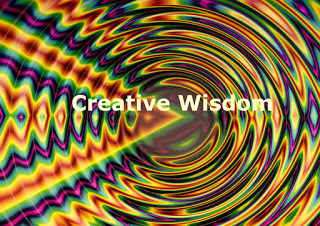 Creativity is an innate ability to create novel ideas. Creative Thinking is unique and original than many other types of thinking: some are the habit, repetition of memory, emotional reaction, approval seeking, following, social conformity. Creativity is about thinking beyond conventional wisdom, or the “Out of Box” thinking. Creativity is infused with an inner cohesion and comes from a vision of uniqueness. So is creativity a high level of thinking, and what is creative wisdom all about?
Creativity is an innate ability to create novel ideas. Creative Thinking is unique and original than many other types of thinking: some are the habit, repetition of memory, emotional reaction, approval seeking, following, social conformity. Creativity is about thinking beyond conventional wisdom, or the “Out of Box” thinking. Creativity is infused with an inner cohesion and comes from a vision of uniqueness. So is creativity a high level of thinking, and what is creative wisdom all about?
The creative state of mind: With increasing speed of changes and hyperconnectivity of the Digital Era, creativity today asks for a new mindset, a connected world image, and cognitive intelligence, allowing the creative flow to open up for information abundance and knowledge sharing. Hence, the creative state of mind means many things, it’s an open mind to continue learning and discovering, it’s a possible mind to think in a positive way, it’s a desirable mind to transform inward driven creativity into outward driven innovation, and it’s a disruptive mind to convey different perspectives. It’s a persistent attitude and the inner feeling about “we can do better than the status quo.” It is the ultra-modern mind that keeps flowing to push the human world forward.
Creativity is context-dependent: Creativity is a higher level of thinking because it often imposes a higher cognitive as you think “harder” via different thought processes such as association, perspective shifting, divergent thinking, etc. When you are on a higher plane of thinking, you are not confined by the wall. Thinking things differently and making imagination roll into reality is creativity. Knowledge, especially interdisciplinary knowledge can further spark your creativity because you have more dots to connect and a good foundation to frame your imagination. However, being creative is not just about “being knowledgeable,” because they are often at the edge of things and able to expands the boundaries of knowledge. To be creative, you need to re-frame the new box thinking, first, you need to embrace the unknown - think outside the box. Second, you need to challenge the knowing (the old box). The box is the set of rules you are abiding by at any moment in the box, but when things move forward, the outdated rules need to be removed, and creative thinkers would feel more comfortable to break down those old boxes and continuously evolve, adapt, and prepare for changes and progress.
Multi-faceted creativity: Creativity is like a color spectrum. There are commonalities that are relevant to all colors which reflect the spectrum of light. Such metaphor connects the dot back to the nature of creativity. There is a purpose” to creativity, And there are situations where the unique attributes of each color are incredibly important and meaningful. Creativity is applied in many spheres of human activity. An essential aspect of creativity is the ability to challenge assumptions, beliefs, conclusions, and to be able to contemplate multiple, even conflicting views of situations. Creativity is all about change. Creativity is not a “thing,” it’s a process that happens as a proactive mental activity to a problem. Creativity is as much defined by the problem as by the capacity of the individual to connect things to resolve that problem in new and unexpected ways. Creativeness derives from one’s ability to let go, let go of assumptions and stigmas we place on objects, ideas, functions, and has a vision of purpose besides what is already obvious. The willingness to fail and try again in order to succeed one day.
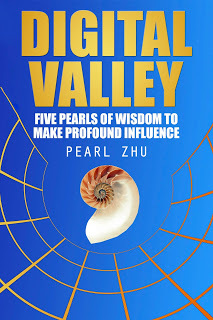 Creativity has many dimensions, with multifaceted truth and myth, manifold knowledge and incredible imagination. Creativity is a flow, an abstract, and an imagination. Creativity happens in both unconscious and conscious level. Creativity is a complex, multidimensional thought process, creativity is infused with an inner cohesiveness and comes from a vision of uniqueness.We all are utilizing our power to create, otherwise, wouldn’t exist. Either from content, context, or by definition, creativity is high-level thinking, and creative wisdom is an ultimate intelligence to advance human society.
Creativity has many dimensions, with multifaceted truth and myth, manifold knowledge and incredible imagination. Creativity is a flow, an abstract, and an imagination. Creativity happens in both unconscious and conscious level. Creativity is a complex, multidimensional thought process, creativity is infused with an inner cohesiveness and comes from a vision of uniqueness.We all are utilizing our power to create, otherwise, wouldn’t exist. Either from content, context, or by definition, creativity is high-level thinking, and creative wisdom is an ultimate intelligence to advance human society.
Digital Valley Book Slideshare Presentation & VideoDigital Valley IntroductionDigital Valley Preview Chapter 1 Creative Wisdom
Digital Valley Book Order Link on AmazonDigital Valley Book Order Link on Barners&NobleDigital Valley Book Order Link on IBook
Follow us at: @Pearl_Zhu
 Creativity is an innate ability to create novel ideas. Creative Thinking is unique and original than many other types of thinking: some are the habit, repetition of memory, emotional reaction, approval seeking, following, social conformity. Creativity is about thinking beyond conventional wisdom, or the “Out of Box” thinking. Creativity is infused with an inner cohesion and comes from a vision of uniqueness. So is creativity a high level of thinking, and what is creative wisdom all about?
Creativity is an innate ability to create novel ideas. Creative Thinking is unique and original than many other types of thinking: some are the habit, repetition of memory, emotional reaction, approval seeking, following, social conformity. Creativity is about thinking beyond conventional wisdom, or the “Out of Box” thinking. Creativity is infused with an inner cohesion and comes from a vision of uniqueness. So is creativity a high level of thinking, and what is creative wisdom all about?
The creative state of mind: With increasing speed of changes and hyperconnectivity of the Digital Era, creativity today asks for a new mindset, a connected world image, and cognitive intelligence, allowing the creative flow to open up for information abundance and knowledge sharing. Hence, the creative state of mind means many things, it’s an open mind to continue learning and discovering, it’s a possible mind to think in a positive way, it’s a desirable mind to transform inward driven creativity into outward driven innovation, and it’s a disruptive mind to convey different perspectives. It’s a persistent attitude and the inner feeling about “we can do better than the status quo.” It is the ultra-modern mind that keeps flowing to push the human world forward.
Creativity is context-dependent: Creativity is a higher level of thinking because it often imposes a higher cognitive as you think “harder” via different thought processes such as association, perspective shifting, divergent thinking, etc. When you are on a higher plane of thinking, you are not confined by the wall. Thinking things differently and making imagination roll into reality is creativity. Knowledge, especially interdisciplinary knowledge can further spark your creativity because you have more dots to connect and a good foundation to frame your imagination. However, being creative is not just about “being knowledgeable,” because they are often at the edge of things and able to expands the boundaries of knowledge. To be creative, you need to re-frame the new box thinking, first, you need to embrace the unknown - think outside the box. Second, you need to challenge the knowing (the old box). The box is the set of rules you are abiding by at any moment in the box, but when things move forward, the outdated rules need to be removed, and creative thinkers would feel more comfortable to break down those old boxes and continuously evolve, adapt, and prepare for changes and progress.
Multi-faceted creativity: Creativity is like a color spectrum. There are commonalities that are relevant to all colors which reflect the spectrum of light. Such metaphor connects the dot back to the nature of creativity. There is a purpose” to creativity, And there are situations where the unique attributes of each color are incredibly important and meaningful. Creativity is applied in many spheres of human activity. An essential aspect of creativity is the ability to challenge assumptions, beliefs, conclusions, and to be able to contemplate multiple, even conflicting views of situations. Creativity is all about change. Creativity is not a “thing,” it’s a process that happens as a proactive mental activity to a problem. Creativity is as much defined by the problem as by the capacity of the individual to connect things to resolve that problem in new and unexpected ways. Creativeness derives from one’s ability to let go, let go of assumptions and stigmas we place on objects, ideas, functions, and has a vision of purpose besides what is already obvious. The willingness to fail and try again in order to succeed one day.
 Creativity has many dimensions, with multifaceted truth and myth, manifold knowledge and incredible imagination. Creativity is a flow, an abstract, and an imagination. Creativity happens in both unconscious and conscious level. Creativity is a complex, multidimensional thought process, creativity is infused with an inner cohesiveness and comes from a vision of uniqueness.We all are utilizing our power to create, otherwise, wouldn’t exist. Either from content, context, or by definition, creativity is high-level thinking, and creative wisdom is an ultimate intelligence to advance human society.
Creativity has many dimensions, with multifaceted truth and myth, manifold knowledge and incredible imagination. Creativity is a flow, an abstract, and an imagination. Creativity happens in both unconscious and conscious level. Creativity is a complex, multidimensional thought process, creativity is infused with an inner cohesiveness and comes from a vision of uniqueness.We all are utilizing our power to create, otherwise, wouldn’t exist. Either from content, context, or by definition, creativity is high-level thinking, and creative wisdom is an ultimate intelligence to advance human society.
Digital Valley Book Slideshare Presentation & VideoDigital Valley IntroductionDigital Valley Preview Chapter 1 Creative Wisdom
Digital Valley Book Order Link on AmazonDigital Valley Book Order Link on Barners&NobleDigital Valley Book Order Link on IBook
Follow us at: @Pearl_Zhu
Published on April 13, 2016 23:42
“CIO Master” Tuning V: “5W + 1H” Strategy Navigation
A strategy is a combination of an origin, a destination, and a route to get from origin to destination.
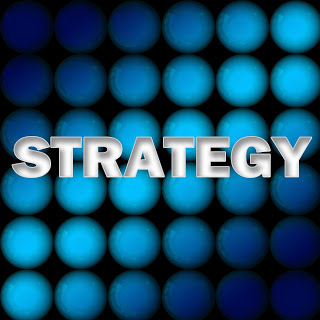 The strategy is the pillar of organizational existence, its vision, mission, design, structure, and functions. A real strategy is neither a document nor a forecast, but rather an overall approach based on a diagnosis of a challenge. Being “strategic” is being centered around “Why” and “What,” and being backed by a roadmap and a plan of action that are informed with “Who,” “Where,” and “When.” The “tactics” is being more centered on the “HOW,” the individual steps and mechanics involved in the execution. More specifically, what is the “5W+1H” strategy navigation all about?
The strategy is the pillar of organizational existence, its vision, mission, design, structure, and functions. A real strategy is neither a document nor a forecast, but rather an overall approach based on a diagnosis of a challenge. Being “strategic” is being centered around “Why” and “What,” and being backed by a roadmap and a plan of action that are informed with “Who,” “Where,” and “When.” The “tactics” is being more centered on the “HOW,” the individual steps and mechanics involved in the execution. More specifically, what is the “5W+1H” strategy navigation all about?
Why: Why is strategy crucial to the business’s long-term success? A view of strategy is that it is a way of accomplishing a vision and mission in a given set of circumstances. The circumstances, which are complicated, complex and inherently uncertain all at the same time, are in the present moment, but some aspects have strong implications for future circumstances. The strategy is also a coherent plan to achieve specific goals through a series of mutually supportive and integrated actions. If this definition were adhered to, then, of course, a strategy would be systematic. All strategies fall under and are subject to systemic constraints in which they exist. As to being effective, it would depend entirely on the scale and desired outcomes within their respective system. There are three essential elements of a good strategy: (1) a diagnosis of the situation, (2) The choice of an overall guiding policy; (3) The design of coherent action. They big “WHY” of strategy is to define an overarching way to differentiate your plan of uniqueness against your opponents to increase your ability to achieve your goals.
What: Every company needs a good strategic planning process and a management cycle to benchmark that plans to monthly operations, even weekly when done well. It’s important to build effective business system - The “WHAT” part of strategy with proper disciplines:A. Strategic Planning Process - Some, especially chaotic situations require an "act, sense, respond" approach, and so the strategy is to act and find out what happens. B. Management Best Practices - For Performance, Accountability, and Merit.C. Dashboard and metrics - You have to measure the right things right.D. Strategic Budgeting process - Opportunity and innovation driven budgeting.E. Process Management - To capture and refine institutional knowledge.F. Talent Management - Human Capital Acquisition and Development for culture control, improvement, and finding, developing and keeping the best people.
Who: PEOPLE are always one of the weakest links in strategy execution. The business strategy execution gaps exist at the people’s mindsets, the organizational culture. The big “WHO” of strategy directly impact on the effectiveness of strategy management. Hence, it’s crucial to build the right team and empowering them to implement the strategy. Organizations are usually wrong in believing that engaging the management team is enough to build the right team. Managers may or may not be fully respected and followed by team members, but there will be people in the teams who are known for high performance, right attitude of helping co-workers and who are highly regarded and followed by other team members. A strategy implementation team should be built with such people because these are the people who can drive changes efficiently, break the resistance of people and encourage them to accept new changes. How many employees involved in the Strategic Planning process really feel full ownership? Probably not as many as top management would believe. The best way to do this is to bring to the process the same level of motivation and energy they had when they first took on their leadership role. Because with that comes the willingness to be unattached to what's come before, the freedom to not need to justify any prior decisions, and the freedom to ask the hard questions and see things as they really are.
Where: Strategy management is one of the most important business activities in organizations today. It is a cohesive entity of programs, projects, and policies that concentrate and fuse corporate resources to enable an organization to establish, sustain, and enhance its competitiveness and capabilities for self-renewal. One of the important statements in strategy is “WHERE should you improve,” so you can succeed WHERE you choose to improve. The plan also has to be dynamic so that it can deal with changed conditions and unforeseen circumstances. The big “WHERE” also refers to the processes to implement the strategy. The processes are the tool to get the result you formulate in the strategy. Many times you don't consider the processes as the main driver to deliver the desired result, and then you will not get the result you hoped for. It is advisable for any organization to adapt step by step process to manage strategy and build internal capability with it. The process, however, needs periodical reviews to test if the process is understood by all and that produces expected outcomes. Methodologically, a more adaptive strategy-development process places a premium on effective communications from all the executives participating. Also, convert these initiatives into an operating reality by formally integrating the strategic-management process with financial planning processes, governance processes or other key business processes, and create a rigorous, ongoing management process for formulating the specific strategic initiatives.
When: With increasing speed of changes, timing is crucial in strategy execution. Sometimes strategic objectives seem to be achievable and as you move toward accomplishment in time, the constant assessment indicates your progress is too slow. This is potentially right because you have not resourced, set the conditions or positioned yourself for success, this could also be because the market conditions of changed or you were unable to account for some variables that had a tremendous impact from the beginning. A very important question is to determine WHEN these objective need to be completed. Key phrases to assist in this could include “no later than” or “by” or “no earlier than.” This assists an organization in assessing their progress and making improvements based on the changing environment. In short, a robust Strategy Management needs to embed “Time Management” mechanism to ensure on time deliveries and solid strategy execution.
 How: Strategy management is about creating tomorrow's organization out of today. Therefore, it is critical to identify and strengthen the weakest link and determines HOW each part of the organization, including all of the key functions must "put it all together," to be successful in implementing strategy and bring tangible business results. The more focus needs to be on what is realistic and HOW the expectations of the business and its employees can grow. Executing strategies with “Know-HOW” should be a doddle if the actual planning is spot on, listen to your employees, listen to the market , listen to the competition, be realistic, believe in the plan , more to the point is to make sure everybody else believes on the plan too and last but not least, be innovative.
How: Strategy management is about creating tomorrow's organization out of today. Therefore, it is critical to identify and strengthen the weakest link and determines HOW each part of the organization, including all of the key functions must "put it all together," to be successful in implementing strategy and bring tangible business results. The more focus needs to be on what is realistic and HOW the expectations of the business and its employees can grow. Executing strategies with “Know-HOW” should be a doddle if the actual planning is spot on, listen to your employees, listen to the market , listen to the competition, be realistic, believe in the plan , more to the point is to make sure everybody else believes on the plan too and last but not least, be innovative.
A strategy is a combination of an origin, a destination, and a route to get from origin to destination. Through a comprehensive “5W+1H” navigation, you could find the route based on the right means and capabilities, the right people and the right timing. It shouldn’t always take the shortcut with linear steps, but pick the premium route to renewal a strategy-execution continuum.
Follow us at: @Pearl_Zhu
 The strategy is the pillar of organizational existence, its vision, mission, design, structure, and functions. A real strategy is neither a document nor a forecast, but rather an overall approach based on a diagnosis of a challenge. Being “strategic” is being centered around “Why” and “What,” and being backed by a roadmap and a plan of action that are informed with “Who,” “Where,” and “When.” The “tactics” is being more centered on the “HOW,” the individual steps and mechanics involved in the execution. More specifically, what is the “5W+1H” strategy navigation all about?
The strategy is the pillar of organizational existence, its vision, mission, design, structure, and functions. A real strategy is neither a document nor a forecast, but rather an overall approach based on a diagnosis of a challenge. Being “strategic” is being centered around “Why” and “What,” and being backed by a roadmap and a plan of action that are informed with “Who,” “Where,” and “When.” The “tactics” is being more centered on the “HOW,” the individual steps and mechanics involved in the execution. More specifically, what is the “5W+1H” strategy navigation all about?
Why: Why is strategy crucial to the business’s long-term success? A view of strategy is that it is a way of accomplishing a vision and mission in a given set of circumstances. The circumstances, which are complicated, complex and inherently uncertain all at the same time, are in the present moment, but some aspects have strong implications for future circumstances. The strategy is also a coherent plan to achieve specific goals through a series of mutually supportive and integrated actions. If this definition were adhered to, then, of course, a strategy would be systematic. All strategies fall under and are subject to systemic constraints in which they exist. As to being effective, it would depend entirely on the scale and desired outcomes within their respective system. There are three essential elements of a good strategy: (1) a diagnosis of the situation, (2) The choice of an overall guiding policy; (3) The design of coherent action. They big “WHY” of strategy is to define an overarching way to differentiate your plan of uniqueness against your opponents to increase your ability to achieve your goals.
What: Every company needs a good strategic planning process and a management cycle to benchmark that plans to monthly operations, even weekly when done well. It’s important to build effective business system - The “WHAT” part of strategy with proper disciplines:A. Strategic Planning Process - Some, especially chaotic situations require an "act, sense, respond" approach, and so the strategy is to act and find out what happens. B. Management Best Practices - For Performance, Accountability, and Merit.C. Dashboard and metrics - You have to measure the right things right.D. Strategic Budgeting process - Opportunity and innovation driven budgeting.E. Process Management - To capture and refine institutional knowledge.F. Talent Management - Human Capital Acquisition and Development for culture control, improvement, and finding, developing and keeping the best people.
Who: PEOPLE are always one of the weakest links in strategy execution. The business strategy execution gaps exist at the people’s mindsets, the organizational culture. The big “WHO” of strategy directly impact on the effectiveness of strategy management. Hence, it’s crucial to build the right team and empowering them to implement the strategy. Organizations are usually wrong in believing that engaging the management team is enough to build the right team. Managers may or may not be fully respected and followed by team members, but there will be people in the teams who are known for high performance, right attitude of helping co-workers and who are highly regarded and followed by other team members. A strategy implementation team should be built with such people because these are the people who can drive changes efficiently, break the resistance of people and encourage them to accept new changes. How many employees involved in the Strategic Planning process really feel full ownership? Probably not as many as top management would believe. The best way to do this is to bring to the process the same level of motivation and energy they had when they first took on their leadership role. Because with that comes the willingness to be unattached to what's come before, the freedom to not need to justify any prior decisions, and the freedom to ask the hard questions and see things as they really are.
Where: Strategy management is one of the most important business activities in organizations today. It is a cohesive entity of programs, projects, and policies that concentrate and fuse corporate resources to enable an organization to establish, sustain, and enhance its competitiveness and capabilities for self-renewal. One of the important statements in strategy is “WHERE should you improve,” so you can succeed WHERE you choose to improve. The plan also has to be dynamic so that it can deal with changed conditions and unforeseen circumstances. The big “WHERE” also refers to the processes to implement the strategy. The processes are the tool to get the result you formulate in the strategy. Many times you don't consider the processes as the main driver to deliver the desired result, and then you will not get the result you hoped for. It is advisable for any organization to adapt step by step process to manage strategy and build internal capability with it. The process, however, needs periodical reviews to test if the process is understood by all and that produces expected outcomes. Methodologically, a more adaptive strategy-development process places a premium on effective communications from all the executives participating. Also, convert these initiatives into an operating reality by formally integrating the strategic-management process with financial planning processes, governance processes or other key business processes, and create a rigorous, ongoing management process for formulating the specific strategic initiatives.
When: With increasing speed of changes, timing is crucial in strategy execution. Sometimes strategic objectives seem to be achievable and as you move toward accomplishment in time, the constant assessment indicates your progress is too slow. This is potentially right because you have not resourced, set the conditions or positioned yourself for success, this could also be because the market conditions of changed or you were unable to account for some variables that had a tremendous impact from the beginning. A very important question is to determine WHEN these objective need to be completed. Key phrases to assist in this could include “no later than” or “by” or “no earlier than.” This assists an organization in assessing their progress and making improvements based on the changing environment. In short, a robust Strategy Management needs to embed “Time Management” mechanism to ensure on time deliveries and solid strategy execution.
 How: Strategy management is about creating tomorrow's organization out of today. Therefore, it is critical to identify and strengthen the weakest link and determines HOW each part of the organization, including all of the key functions must "put it all together," to be successful in implementing strategy and bring tangible business results. The more focus needs to be on what is realistic and HOW the expectations of the business and its employees can grow. Executing strategies with “Know-HOW” should be a doddle if the actual planning is spot on, listen to your employees, listen to the market , listen to the competition, be realistic, believe in the plan , more to the point is to make sure everybody else believes on the plan too and last but not least, be innovative.
How: Strategy management is about creating tomorrow's organization out of today. Therefore, it is critical to identify and strengthen the weakest link and determines HOW each part of the organization, including all of the key functions must "put it all together," to be successful in implementing strategy and bring tangible business results. The more focus needs to be on what is realistic and HOW the expectations of the business and its employees can grow. Executing strategies with “Know-HOW” should be a doddle if the actual planning is spot on, listen to your employees, listen to the market , listen to the competition, be realistic, believe in the plan , more to the point is to make sure everybody else believes on the plan too and last but not least, be innovative.
A strategy is a combination of an origin, a destination, and a route to get from origin to destination. Through a comprehensive “5W+1H” navigation, you could find the route based on the right means and capabilities, the right people and the right timing. It shouldn’t always take the shortcut with linear steps, but pick the premium route to renewal a strategy-execution continuum.
Follow us at: @Pearl_Zhu
Published on April 13, 2016 23:37
April 12, 2016
The Monthly Change Management Agenda: Change as an Ongoing Capability Apr. 2016
 Change is inevitable, but too often changes are made as a reaction to outer impulses, crisis, and demands. This is the bureaucracy’s way of meeting the challenges. The perspective is often rational, an automatic cultural response; defending already existing structures, all that we take for granted, without questioning the underlying premises. So in order to make change both proactive and sustainable, How to make great inquiries - change via questioning?
Change is inevitable, but too often changes are made as a reaction to outer impulses, crisis, and demands. This is the bureaucracy’s way of meeting the challenges. The perspective is often rational, an automatic cultural response; defending already existing structures, all that we take for granted, without questioning the underlying premises. So in order to make change both proactive and sustainable, How to make great inquiries - change via questioning?
Change as an Ongoing CapabilityFive Insight of Organizational Change Management Capability: The speed of change is accelerated, enterprise agility –the ability to adapt to the change, is becoming the key factor in driving business success and gaining the long-term competitive advantage. But how do you build an organizational change management capability?
How Capable is your Organization Handling Changes Change becomes fundamentally difficult in most organizations because it is treated as something distinct from running the business, evolving performance and increasing results over time. Leaders and employees are stressed enough in getting done what is right in front of them that change is layered upon becomes disruptive. However, the accelerating speed of change, the volatile and uncertain business environment make the change as an ongoing capability organizations must master, so in which aspects the business should focus on to building its change ‘muscles’?
Change as an Ongoing Capability: Change is a volatile subject, just like change itself. Everything changes continuously by following the laws of evolution, and the rate of change is accelerated. Corporate change can be a simple modification of strategy, a business process improvement or a more radical digital transformation. Either at the individual or organizational level, at the more static industrial era, change is a one-time project; at digital age, change has to become an ongoing capability.
How to Build Change Capability within an Organization Change is the most significant characteristic of digitalization, the pace of change is accelerating, therefore, organization’s change capability is crucial for its surviving and thriving today, but how to build such capability within an organization?
 How Coherent are your IT Enabled Digital Capabilities? IT plays a pivotal role in leading digital transformation at many forward-thinking organizations today, and IT strategy is an integral component of the corporate level digital strategy. A digital strategy has a purpose of driving customer engagement and experience as a cross-functional responsibility. Thus, the digital strategy needs to look outward with outside-in customer perspective; but the issue is that most IT departments look inward. So how effective does IT enable the business growth, and how coherent are your IT enabled digital capabilities?
How Coherent are your IT Enabled Digital Capabilities? IT plays a pivotal role in leading digital transformation at many forward-thinking organizations today, and IT strategy is an integral component of the corporate level digital strategy. A digital strategy has a purpose of driving customer engagement and experience as a cross-functional responsibility. Thus, the digital strategy needs to look outward with outside-in customer perspective; but the issue is that most IT departments look inward. So how effective does IT enable the business growth, and how coherent are your IT enabled digital capabilities?
The “Future of CIO” Blog has reached 1.3 million page views with about 2500+ blog posting in 59+ different categories of leadership, management, strategy, digitalization, change/talent, etc. The content richness is not for its own sake, but to convey the vision and share the wisdom. Blogging is not about writing, but about thinking; it’s not just about WHAT to say, but about WHY to say, and HOW to say it. It reflects the color and shade of your thought patterns, and it indicates the peaks and curves of your thinking waves. Unlike pure entertainment, quality and professional content takes time for digesting, contemplation and engaging, and therefore, it takes time to attract the "hungry minds" and the "deep souls." It’s the journey to amplify your voice, deepen your digital footprints, and match your way for human progression.
Follow us at: @Pearl_Zhu
Published on April 12, 2016 23:51
Three Questions to Assess a Person’s “Blind Spot”
 The business and the world are moving into deep, deep digital dynamic with velocity, complexity, uncertainty, ambiguity and rapid changes. It is increasingly difficult to either steer the individual (career path) or the business (strategy) always toward the right direction; it is also more challenging to make effective decisions or sound judgment on the daily basis. So how to assess a person’s “blind spot” in order to predict his/her ability to think thoroughly and decide wisely?
The business and the world are moving into deep, deep digital dynamic with velocity, complexity, uncertainty, ambiguity and rapid changes. It is increasingly difficult to either steer the individual (career path) or the business (strategy) always toward the right direction; it is also more challenging to make effective decisions or sound judgment on the daily basis. So how to assess a person’s “blind spot” in order to predict his/her ability to think thoroughly and decide wisely?
What’s the root cause of your “Blind Spot”? “Blind Spot” is not a new topic everyone has some, but some have more, some have less: The root causes are often the people’s mentality ( such as ego), thought processes (lack of “whole brain” thinking), or lack of knowledge or insight. For example, the binary thinking (either right or wrong) can create blind spots. Sometimes there is an obvious right or wrong solution to a problem which you have. But when someone else looks at the problem from their perspective, they may come up with different ideas as to what is right or wrong. The problem of questionable RIGHT or WRONG comes when they are based on beliefs, which are developed by human thinking, or their own experience. Even the rules, which are made by humans come in for questioning. Everyone grows up with a different style and the business cultures in which they've worked will shape how confident they are. People also have different experience and personality, therefore, they may have different way to do things or provide feedback. Philosophically, there isn't always a right or wrong choice in any situation and there are a lot of grays. This makes it very hard to choose a right or wrong from your choices. We challenge, we debate, we learn the nature of each other through the aspect of civil and respectful dialog. We shift and move our thoughts through this process while growing in mind and spirit to the competitive nature that is the essence of being human.
Why are blind spots often caused by silo thinking? Silos are a method of containment and storage: bounded groups or insular tribes are evidence of silos, and silos are reservoirs for homogeneous thinking, limiting the individual or an organization's creativity and innovation, and create more blind spots to understand things holistically. In today's volatile economy, nothing impedes progress more than protective silos which are simply a form of bureaucratic amorphous mass designed to preserve the status quo. From management perspective, silo mentality is a common challenge for lots of organizations because it creates gaps and leave blind spots in Strategy Management. It is not structured, but the behaviors and attitudes of the leadership teams, how does one eliminate bureaucracy? What would be some ideas to assist in breaking down silos in an organization where they are present? It is the responsibility of the leaders to initiate his or her team to break the silos to realize the common goals or strategy which are far more important than the personal and departmental goals. When you measure the end and not the means, the silo walls will become retractable, and the blind spots can be filled out more seamlessly.
 Can high EQ help the leaders and digital professionals to fill blind spots? It is the importance of dealing with the blind spots by learning how to be quick to listen, slow to speak, and slow to anger. Can you provide calm inquiry clearing the blind spots to help find out what is really happening. Your "signal light" behavior illustrates the value of maintaining self-control when you face hardships in business or your personal life. So high EQ can break down silo and fill blind spot effectively. Can you see the bigger picture and is not living the day-to-day activities only? Can you always dig through the root cause, not just know the symptom? Superficiality is also the reason to create blind spots and make the world disconnect. Superficiality often means only catch the conventional understanding of content, not the contextual insight beneath the surface; the quantity over quality; the close-mindedness, the stereotypical thinking or pre-conceived ideas about how things should happen; or to put simply, it's just skin deep. That is pretty much the very reason to create blind spots and build the walls in people’s mind.
Can high EQ help the leaders and digital professionals to fill blind spots? It is the importance of dealing with the blind spots by learning how to be quick to listen, slow to speak, and slow to anger. Can you provide calm inquiry clearing the blind spots to help find out what is really happening. Your "signal light" behavior illustrates the value of maintaining self-control when you face hardships in business or your personal life. So high EQ can break down silo and fill blind spot effectively. Can you see the bigger picture and is not living the day-to-day activities only? Can you always dig through the root cause, not just know the symptom? Superficiality is also the reason to create blind spots and make the world disconnect. Superficiality often means only catch the conventional understanding of content, not the contextual insight beneath the surface; the quantity over quality; the close-mindedness, the stereotypical thinking or pre-conceived ideas about how things should happen; or to put simply, it's just skin deep. That is pretty much the very reason to create blind spots and build the walls in people’s mind.
Think, Ask and Continue learning. Most people or teams operate with an incomplete and relatively small view of the world. Thus, too often in an effort to keep moving forward, they jump to the wrong conclusions, blast the horn or swerve around the obstacle only to find a poor pedestrian in the way. So the mentality to smash the silo thinking, and high EQ will allow the leaders and digital professionals to clear silos and see further and beyond for effective decision and execution in an adaptive and holistic way.
Follow us at: @Pearl_Zhu
Published on April 12, 2016 23:49
CIO Master Tuning IV: What are inside the Innovation Leaders’ Toolbox
 Businesses today face fiery competition and rapid digital digital paradigm shift technologically and economically, hence, innovation becomes a “must have” strategic capability to compete for the long term business growth. Innovation is about prioritization, a system that can “smell” the right idea at the right time and place, innovation is about having new knowledge and new processes to transform creative ideas to realize its business value. Innovation is not a serendipity, innovation is nothing without exploration and exploitation. People, process and technology -what are in the innovation leaders’ toolbox more specifically, in order to manage innovation with high success rate?
Businesses today face fiery competition and rapid digital digital paradigm shift technologically and economically, hence, innovation becomes a “must have” strategic capability to compete for the long term business growth. Innovation is about prioritization, a system that can “smell” the right idea at the right time and place, innovation is about having new knowledge and new processes to transform creative ideas to realize its business value. Innovation is not a serendipity, innovation is nothing without exploration and exploitation. People, process and technology -what are in the innovation leaders’ toolbox more specifically, in order to manage innovation with high success rate?
Systematic Innovation: A systematic approach is to depict innovation as a system (rather than a traditional process) whose performance depends on the alignment of its various components (people, actions, controls, resources, etc.). Innovation processes are used to create, deliver and manage innovation. Innovation process has usually been defined with a wide-scope view. It encompasses the entire process from the decision to begin research on a recognized or potential problem, to development, commercialization, diffusion, decision to adopt, implementation, and consequences is a structured process and set of practical tools used to create or improve products/services/processes that deliver new value to customers or satisfy employees. Organizations should ideally have a sustainable approach to innovation. The robust process and tools that enable any entity generate winning concepts on the consistent basis, which is the prerequisite for sustaining advantage and growth.- Goals for innovation- Innovation models- Roles and responsibilities for people involved in innovation processes and in connection with the processes and models
Metrics is a tool in the innovation toolbox:Normally organizations look for metrics measuring business results generated by innovation efforts. Innovation performance indicators need to focus on measuring quality, quantity, time, cost, revenue growth, profit improvement, margin targets, product variety for stability, turnover, shareholder/owner return and talent sustainability, etc. The innovation metrics in the context of business impact include such as, % of revenue from new products introduced. You could also change the variables and create something like % of the profit from new ideas implemented. But it takes quite some time for a new innovation drive to produce those measures. One of the solutions is to define innovation process measurement, which demonstrate the growing capability of the organization to deliver more innovation with business impact in the future. The process performance indicators could link to strategy, to make progress on the percentage of projects in the total innovation portfolio which contain a major part of external innovation.What gets measured, gets managed. Metrics is not the end-all solution to management, but simply another set of tools, data, and information sets. Choose the right metrics by deciding which are seen as critical to making progress on in order to deliver more innovations. And keep the measures simple and understandable.
 Other popular innovation frameworks or tools such as TRIZ: For example, there are innovation methodologies & tools based on a theory first formulated 65 years ago by Altshuller and is known as TRIZ, which has four major tools for innovative management:(1). Problem-solving tool,(2). Failures prediction and analysis tools(3). Tools to develop new products and new technology.(4). Tools to develop and protect patents.
Other popular innovation frameworks or tools such as TRIZ: For example, there are innovation methodologies & tools based on a theory first formulated 65 years ago by Altshuller and is known as TRIZ, which has four major tools for innovative management:(1). Problem-solving tool,(2). Failures prediction and analysis tools(3). Tools to develop new products and new technology.(4). Tools to develop and protect patents.
Different organizations have their own “innovation strength.” The Innovation-generating organization depends more heavily on its technological knowledge and market capabilities to develop and commercialize innovations; the innovation-adopting organization relies more on its managerial and organizational capabilities to select and assimilate innovations. The first organization in the first category needs the ability to generate innovative outputs more effectively, but the organizations in the second category need to build the ability to absorb innovative inputs efficiently. So innovation leaders in different organizations and industries should match their own needs to build their innovation strength, and fill their innovation tool box with tailored process, frameworks, and metrics to create a healthy innovation portfolio and manage innovation in a systematic way.
Follow us at: @Pearl_Zhu
Published on April 12, 2016 23:45
April 11, 2016
Three Questions to Assess a Person’s “Simplicity” Skill
Innovation is progress, and progress is in simplicity.
 People are complex by nature, but to dwell on complexity is to complicate an implicate order that is naturally simple. Getting to simple is not easy for most people because they rather follow the traditions and set rules and regulations in the society. They don't bother to remove the dust around them, or want to question the unknown, or challenge the status quo, out of fear. However, progress is in simplicity. The ability to simplify means to eliminate the unnecessary hassles, so that the necessary can speak out. From talent management perspective, how to assess a person’s “simplicity” skill -Are you always following the “KISS” principle, or do you get used to make things complicated?
People are complex by nature, but to dwell on complexity is to complicate an implicate order that is naturally simple. Getting to simple is not easy for most people because they rather follow the traditions and set rules and regulations in the society. They don't bother to remove the dust around them, or want to question the unknown, or challenge the status quo, out of fear. However, progress is in simplicity. The ability to simplify means to eliminate the unnecessary hassles, so that the necessary can speak out. From talent management perspective, how to assess a person’s “simplicity” skill -Are you always following the “KISS” principle, or do you get used to make things complicated?
Do you have a simple mind, simple thought, and be passionate about simplicity? Though we know every intelligence has certain complexity in it, complexity is not equal to complication, complexity is sometimes necessary, but complication can always be optimized. Often human cannot live the life with simplicity and keep making it complicated, and when it is complicated, they make it more complicated instead of simplifying. Very rare case we find people with simple mind, simple thought and who gets on to simplifying everything being passionate for simplicity, be it thought, procedures, systems, life, nature. Simplicity is a behavioral attitude to see things as and what and where they are and be content and cool as it is.Logically, simplifying the complicated thing is an optimal and smart choice, for most of the people, it is the other way round. They make simplicity as the source to make anything and everything complicated. It is not that they are not intelligent, it is just that they can't live with simplicity. Things should be as simple as possible, but no simpler -Einstein
Can you often explain things in simple way, and how to leverage simplicity in innovation management? If you can't explain it simply, you don't understand it well enough -Einstein. Innovation is often to figure out the better way to do things. And simplicity is the ultimate level of sophistication. Innovation is the process to transform novel ideas into products/service and achieve its business value. Although more often, innovations come from bottom up, innovation management is derived from a vision, coming from top management and shared by top management with all its employees in order to profit from it. Besides vision, communication is the key to streamlining innovation process and bridging idea creation and implementation. . The innovation process needs to be part of the DNA of a company, as it may well reflect its business culture-bureaucratic or innovative; is your innovation management too complex with heavy centralized process attempted to 'manage' simple employee ideas. Such ideas should be reviewed, selected and developed locally using a simply empowered process. Innovation processes fall into one of two camps; one is so detailed and specific such that compliance with the process is impractical, or it is so high level and abstracted from the issues at hand that they do not provide useful guidance or lack of formal process. Something more balanced and interpreted is called for, but then it wouldn't be a "process," at least as currently defined. Innovation process needs to be agile and flexible.
 Are you an intelligent fool or make progress via simplicity? Any intelligent fool can make things bigger, more complex, and more violent. It takes a touch of genius - and a lot of courage - to move in the opposite direction -Einstein: When pioneering and solving problems, initial solutions are often more complex than required, and then adoption and progress come with simplification. Progress is in simplification, which often follows complexity. Philosophically, simplicity further implies elegance, intuitiveness and maturity. And methodologically, Externally simplicity is directly proportional to internally complexity.
Are you an intelligent fool or make progress via simplicity? Any intelligent fool can make things bigger, more complex, and more violent. It takes a touch of genius - and a lot of courage - to move in the opposite direction -Einstein: When pioneering and solving problems, initial solutions are often more complex than required, and then adoption and progress come with simplification. Progress is in simplification, which often follows complexity. Philosophically, simplicity further implies elegance, intuitiveness and maturity. And methodologically, Externally simplicity is directly proportional to internally complexity.
The simplicity and the complexity are just opposite ends of the same spectrum. Simplicity and Complexity is an age-old dilemma even in English Grammar! That compounds all "problems." You need complexity to understand and appreciate the simplicity and vice versa. It's all about balance and perception. In the core of simplicity lies complexity, more simple one perceives in any system, problem or living being is inherently more complex. But keep the process simple, not simpler; as innovation is progress, and progress is in simplicity.
Follow us at: @Pearl_Zhu
 People are complex by nature, but to dwell on complexity is to complicate an implicate order that is naturally simple. Getting to simple is not easy for most people because they rather follow the traditions and set rules and regulations in the society. They don't bother to remove the dust around them, or want to question the unknown, or challenge the status quo, out of fear. However, progress is in simplicity. The ability to simplify means to eliminate the unnecessary hassles, so that the necessary can speak out. From talent management perspective, how to assess a person’s “simplicity” skill -Are you always following the “KISS” principle, or do you get used to make things complicated?
People are complex by nature, but to dwell on complexity is to complicate an implicate order that is naturally simple. Getting to simple is not easy for most people because they rather follow the traditions and set rules and regulations in the society. They don't bother to remove the dust around them, or want to question the unknown, or challenge the status quo, out of fear. However, progress is in simplicity. The ability to simplify means to eliminate the unnecessary hassles, so that the necessary can speak out. From talent management perspective, how to assess a person’s “simplicity” skill -Are you always following the “KISS” principle, or do you get used to make things complicated?
Do you have a simple mind, simple thought, and be passionate about simplicity? Though we know every intelligence has certain complexity in it, complexity is not equal to complication, complexity is sometimes necessary, but complication can always be optimized. Often human cannot live the life with simplicity and keep making it complicated, and when it is complicated, they make it more complicated instead of simplifying. Very rare case we find people with simple mind, simple thought and who gets on to simplifying everything being passionate for simplicity, be it thought, procedures, systems, life, nature. Simplicity is a behavioral attitude to see things as and what and where they are and be content and cool as it is.Logically, simplifying the complicated thing is an optimal and smart choice, for most of the people, it is the other way round. They make simplicity as the source to make anything and everything complicated. It is not that they are not intelligent, it is just that they can't live with simplicity. Things should be as simple as possible, but no simpler -Einstein
Can you often explain things in simple way, and how to leverage simplicity in innovation management? If you can't explain it simply, you don't understand it well enough -Einstein. Innovation is often to figure out the better way to do things. And simplicity is the ultimate level of sophistication. Innovation is the process to transform novel ideas into products/service and achieve its business value. Although more often, innovations come from bottom up, innovation management is derived from a vision, coming from top management and shared by top management with all its employees in order to profit from it. Besides vision, communication is the key to streamlining innovation process and bridging idea creation and implementation. . The innovation process needs to be part of the DNA of a company, as it may well reflect its business culture-bureaucratic or innovative; is your innovation management too complex with heavy centralized process attempted to 'manage' simple employee ideas. Such ideas should be reviewed, selected and developed locally using a simply empowered process. Innovation processes fall into one of two camps; one is so detailed and specific such that compliance with the process is impractical, or it is so high level and abstracted from the issues at hand that they do not provide useful guidance or lack of formal process. Something more balanced and interpreted is called for, but then it wouldn't be a "process," at least as currently defined. Innovation process needs to be agile and flexible.
 Are you an intelligent fool or make progress via simplicity? Any intelligent fool can make things bigger, more complex, and more violent. It takes a touch of genius - and a lot of courage - to move in the opposite direction -Einstein: When pioneering and solving problems, initial solutions are often more complex than required, and then adoption and progress come with simplification. Progress is in simplification, which often follows complexity. Philosophically, simplicity further implies elegance, intuitiveness and maturity. And methodologically, Externally simplicity is directly proportional to internally complexity.
Are you an intelligent fool or make progress via simplicity? Any intelligent fool can make things bigger, more complex, and more violent. It takes a touch of genius - and a lot of courage - to move in the opposite direction -Einstein: When pioneering and solving problems, initial solutions are often more complex than required, and then adoption and progress come with simplification. Progress is in simplification, which often follows complexity. Philosophically, simplicity further implies elegance, intuitiveness and maturity. And methodologically, Externally simplicity is directly proportional to internally complexity.
The simplicity and the complexity are just opposite ends of the same spectrum. Simplicity and Complexity is an age-old dilemma even in English Grammar! That compounds all "problems." You need complexity to understand and appreciate the simplicity and vice versa. It's all about balance and perception. In the core of simplicity lies complexity, more simple one perceives in any system, problem or living being is inherently more complex. But keep the process simple, not simpler; as innovation is progress, and progress is in simplicity.
Follow us at: @Pearl_Zhu
Published on April 11, 2016 23:06



